Monet’s Garden
David R. Marshall
Monet’s Garden until 8th September 2013, National Gallery of Victoria International.
The latest NGV exhibition is, again, sourced largely from a secondary French museum (the Musée Marmottan Monet, henceforth MMM). Monet exhibitions have traditionally drawn large crowds, and are much loved by gallery directors needing to feed the political machines to which they are beholden that equate numbers with success. But if ‘Monet’ is the brand of brands for art exhibitions, for organisers there is the problem of finding new ways to give a Monet show intellectual credibility and thematic coherence, while marketeers may feel the need to enrich a brand that runs the risk of becoming stale. And, given the economics of international exhibitions in Australia, the bulk of the works need to come from a single source. Hence Monet’s Garden.
‘Monet’s Garden’ is an idea rich in possibilities: it connects cultural tourism (a trip to Giverny) with high-art glorification of artistic genius. While previous NGV exhibitions have emphasised, through videos, places associated with the objects on display (notably the Musée Moreau in the Moreau exhibition and Malmaison with Napoleon), Monet’s Garden takes the place/artwork nexus one step further. I once taught a subject in art history on the history of gardens called Visions of Paradise: Art of the Garden, a title stolen from a picture book by Marina Schinz, and did a week on Monet and Giverny. One of the essay questions was whether Monet was a better gardener than painter. This generated some interesting responses. By asking this question one is forced to look at his Giverny paintings differently: as topographical painting, subordinate to the place represented, rather than a this-is-a-work-of-genius painting. It is quite intriguing, after studying the now well-known colour photos of Monet in his garden nearest the house (e.g. pp. xxiv-xxv of the catalogue) (Fig. 1), to be able to identify what the paintings actually represent. The strength of Impressionism was that it accepted the facts and went from there, so that its underpinning of visual factuality is there if you choose to look. A visit to the waterlily pond at Giverny makes you realise that his Nymphéas paintings are much more realistic than you had thought when you saw them in a gallery (Figs. 3, 14). This helps us to see Monet differently: as the last of the estate topographers, rather than as a wannabee modernist abstractionist.
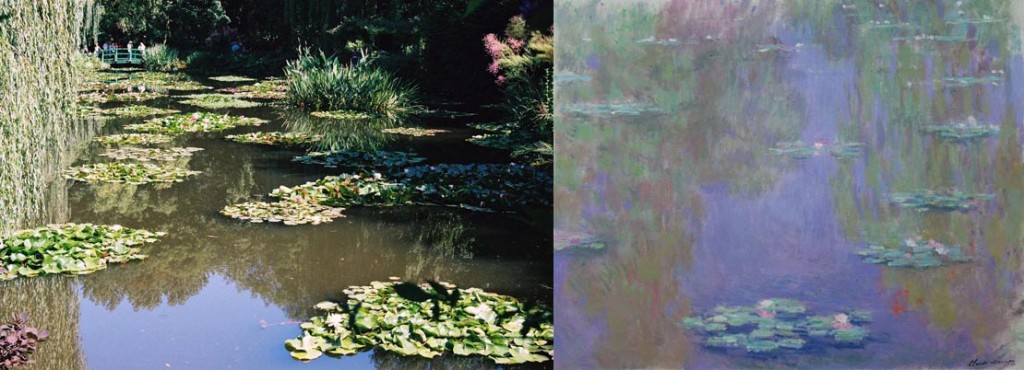
Fig 3 (L) Waterlilies at Giverny. Photo David Marshall Fig 14 Claude Monet 'Waterlilies', 1903, Musee Marmottan Monet, Paris
Responses to topographical painting generally prioritise subject over rendering, place over art. With Canaletto it is typically ‘love the Venice, hate the handling’. With Monet, by contrast, we expect to find the artist when we stand before his works. (Unless, of course, we are looking for what he failed to represent and what this tells us about French society, the theme of much recent scholarship.) It is therefore interesting to ask whether, even for Monet, place matters more than art-object: whether his Nymphéas are just a way of getting us to Giverny, rather than an end in itself. Giverny is thus potentially the paradigmatic example of an understudied theme: the symbiosis between place-making and art. How many twentieth-century painters painted their own back yard, even if it was rarely so extensive as Monet’s? It was not so much that the subject didn’t matter (as we are instructed by the trope of Cézanne painting apples because they didn’t move, enabling him to get on with what really matters— ‘painting’—than that the subject was safe, warm and comfortable: it was home. By painting a little, local, corner of the world one could embalm in quasi-permanent form the importance that place has most of us.
In fact such art is less about apples than flowers. Apples are a legacy of seventeenth-century paintings that conveyed the message that the land was bountiful and that the owner had access to lots of food. Flowers, by contrast are a synechdoche for the garden, a symbol of the good life, for aristocrat, bourgeois and peasant alike. It is interesting that in contemporary garden-making the vegetable garden or potager now has more cachet than the flower garden: it is practical, environmentally sound, and can save you money. For Monet and his successors, however it was the ornamental garden that mattered, and Monet transformed his new property, acquired in 1883, from being a clos Normand (comparable to an Italian vigna)—a plot of land with productive trees (in Monet’s case fruit orchards) and tall cypresses (which Monet felled, along with despised box hedges)—into a flower garden, albeit one with the prosaic organisation into beds of a potager (Fig. 2). This was, followed, more adventurously, by a grand waterlily pond, with Japanese bridge, wisteria, and exotic waterlilies (Fig. 3). If artists less prosperous than Monet were not in a position to create a backyard of sufficient pictorial interest to sustain their art (although a weed-encrusted shed could go a long way), they could paint flowers that might have come from one, or seek out a picturesque village (Newlyn, Anticoli Corrado, Heidelberg), take up residence there, and by so doing turn it into their own (cosy) backyard.
So what then is the status of Monet’s Giverny paintings relative to Giverny itself? From Monet’s perspective, in painting his garden he was both recording it and making something ‘permanent’ from what he could only expect to be impermanent. As this exhibition establishes, this did not happen at once: in parallel with the creation of the garden, Monet gradually retreated from expeditions in search of subjects to painting his own garden, and especially the waterlily pond. But this garden was part of his life and fuel for his work, but was not created to be in itself his timeless legacy. In this regard he was an artist first and a gardener second. But circumstances change. While more people will have seen a Monet in an art gallery than have been to Giverny, given the growth of travel and tourism is is not hard to imagine things becoming the other way about—as was always the case with paintings or drawings representing Baroque gardens like Versailles or English landscape gardens like Stowe.
Or let us put it another way: without Monet the painter, would we bother to visit Giverny? The answer, it seems to me, is: perhaps not; it would be a C destination rather than an A one. The house is not particularly interesting in itself, apart from its association with Monet. The rose avenue, with its blue-green iron rose pergola and nasturtiums spilling over the path, along with the regular blocks of flower beds on either side, are nice but, in purely gardening terms, only so-so (not least because there is nothing to terminate the perspective when seen from the house). Across the former railway line we enter a more iconic space, the water garden, iconic because any blue-green bridge over water becomes a ‘Monet bridge’, just as any red arched bridge becomes a Chinese one. But this iconicity remains inseparable from the paintings that recorded it; there are no doubt other waterlily gardens just as good that do not attract so much attention.
So perhaps the paintings are indeed more important than the garden. They affect our response to the garden not just through associations with the Great Man (as with tours to sites associated with famous authors), but by shaping our perceptions of the garden. This is primarily true of the waterlily garden. When we visit it we see the ripples and shadows on the water in a particular way because of the paintings; perhaps we only see them at all because of the paintings. It is less true of the parts of the garden bearer the house, including the rose path. We have to make an effort to discern these in his paintings, rather than bringing our knowledge of his painting to the rose path itself.
Yet in one respect Monet’s garden offers us something that his paintings do not. Few artists today turn to Monet’s paintings for inspiration other than in indirect ways. The ruthless grip of Modernist teleology, which holds that Art Has Moved Beyond Monet To What We Are Doing Now, means that you don’t find many people out there painting Monetesque images of Albert Park (and if there were the art-critical establishment would ensure they get no airplay). But if you go to Mount Macedon there is a garden called Tieve Tara, which has an rose avenue with blue-green metal arches and climbing roses, and a lake with waterlilies and a blue-green bridge (Figs. 4, 5). The references to Giverny are deliberate and literal (Fig. 6), but are also (I suspect) critically acceptable because they are found in a garden. After all, gardens since Hadrian’a villa have represented or alluded to other places. No-one can claim that it cannot be done at Tieve Tara, because it has been done: it has escaped history, or at least Modernism’s historicist straightjacket. To be sure, it is possible to engage in a discussion of whether or not Giverny-on-Mount-Macedon works as a garden (the eucalypts in the background are resonant in a way that may not be comfortable to some), but it is undoubtedly enriched by the references. But if gardeners can recreate Giverny, why cannot artists recreate Monet? Even more interestingly, why can they not paint Tieve Tara in a Monetesque manner: a double homage to Monet, but also—like Monet’s paintings of Giverny—an ‘artistic’ representation of a created place?
Fig 7. Claude Monet 'Taking a walk near Argenteuil' 1875 oil on canvas 60.0 x 81.0 cm Musée Marmottan Monet, Paris
The Exhibition
But let us return to Monet’s Garden. Here it must be said the excitement of anticipation prompted by the memory of Giverny the place evaporates on entering the exhibition. The first impression is one of a certain monotony. This can often be a problem with an exhibition of a single artist, but is made more acute here by the limited range of chronology and pictorial type type of picture. It is much more like entering an exhibition by a contemporary artist: some works good, some less so, and all dancing to much the same tune. Many came to the Musée Marmottan (now branded the Musée Marmottan Monet) from Monet’s descendants or friends. (Quite a few are unfinished, although ‘sketch’ sounds better.) The tone is set by the work given pride of place on entering, which unlike the masterpiece that occupied this position in the Neo-Impressionism exhibition, is a kind of poor man’s Poppies at Argenteuil (Musée d’Orsay) (Fig. 7).
In any case the prime works produced during the later part of Monet’s life were the Grand Decorations in the Orangerie des Tuileries. These vast works, installed in an oval room, although not not reproduced in the catalogue are evoked by the last room in the exhibition which is a D-shaped multimedia panorama involving 8 or 9 cameras showing a mix of separate images and panoramic ones, accompanied by soothing music (Fig. 8). This is entitled elegiacally ‘The Last Day at Giverny’, which sounds like a Victorian painting about forced departure from a loved place, but which turns out to mean only that it was filmed on the last day (or presumably days) of last year’s public access season. In other words, it is a day at Giverny in Autumn, where the plants are doing what they are doing in Melbourne gardens at the moment, which is somewhat at odds with Monet’s preoccupation with summery flowers. It is also reminiscent of early modern panoramas, and it struck me how problematic such panoramas must have been. Although intended to provide an immersive experience analogous to being there (3D anyone?), if you position yourself close to the centre of the arc of the D the fact that the image continues out of your field of vision is quite distracting, making you want to turn your head continuously to see what you are missing. I found it more comfortable to stand at the back of the room, near the bar of the D, where the effect was a more comfortable ultra wide-screen view, rather than a panoramic one.
For lovers of Giverny, however, this is all the exhibition seems at first to offer about Giverny the garden. One needs to turn to the catalogue early in the piece to connect painting with place, beginning with the useful biographical introduction ‘Monet at Giverny 1883–1926’ by Marianne Mathieu, followed by the section on ‘the Garden at Giverny: a new motif in painting 1895–1926’, which breaks the later works down into pictorial themes: waterlilies; willows; the Japanese Bridge; the path of roses and irises and other flowers. Because of the comparative illustrations (which include some works which, in an ideal world, ought to have been in the exhibition), and the fact that, dare one say it, some works read better in reproduction than in the flesh means that the catalogue works better visually than the exhibition. The exhibition would have benefited from a stronger didactic component, with fuller wall panels with reproductions of comparative illustrations, including plans of the garden and historical and contempoary photographs locating the viewpoints of key paintings and so forth. Exhibition purism has not served this exhibition well.
Incidentally, there is a curious inversion where catalogue and label are concerned. Catalogues used to be the place to go to look up information about a particular work, especially while perambulating the exhibition, while the labels gave the basic title, ownership information and other identifying facts. This catalogue, like other recent NGV catalogues, has no individual entries, only essays and label data, while each work in the exhibition has an extended label not found in the publication, although derived from the essays. To be sure, the assumption today is that the catalogue is a souvenir bought in the shop at the end, having the status of a fridge magnet or postcard, so that the fact that the synthetic essays are not digestible within the exhibition does not matter. Yet the paradox is that the catalogue entry has returned in an inferior form as the extended label. I had to surreptitiously photograph these to have the kind of aide-mémoire formerly to be found in the catalogue, in the way that in pre-catalogue days one had to write down label information in a note book. The labels tend to be flowery, and like most extended labels are physically difficult to read, especially by ageing eyes, and even harder to absorb. The labels addressed to ‘kids’ (i.e. children) are sometimes more useful, because being in plainer language they are digestible in the few moments that is generally devoted to them (even if in them ‘art’ is used as a synonym for ‘work of art’). There is a lot to be said for opening up a catalogue at ‘cat. no. 16’ and reading what the organisers feel one might want to know about the work in question. In fact, not being able to do so inhibits one’s enjoyment of the works. With a more varied exhibition it might not matter, but with so many similar works one needs to have one’s attention drawn to their differences: the absence of catalogue entries encourages you to see the exhibition as an undifferentiated whole, and so disengage from the individual work.
In any case the catalogue/souvenir cannot be used in the exhibition, or usefully as a scholarly resource, since there is no numbering system. This makes it impossible to find anything in the handlist at the back (try looking up Monet, Waterlilies!). In practice you have to leaf through the captioned illustrations to find the work that attracted your attention (and not be caught out by the works illustrated but not actually in the exhibition.) Apparently Australian audiences can’t cope with scholarly catalogues, although those in London or even St Louis, Missouri, can (to judge for the catalogue of the recent Barocci exhibition, or any number of overseas exhibition catalogues that use the opportunity—and generous funding—of an exhibition to find new things to say and to create an up-do-date synthesis of current knowledge.)
The synthetic catalogue essays follow a familiar NGV pattern. In addition to the biographical essay by Mathieu, two are devoted to ‘invisible’ aspects of the works (Sophie Matthiesson on politics and Virginia Spate on symbolism, the latter being the only one with much of interest to say about particular works), and one by Elena Taylor establishing the obligatory Australian connection. Another, by Philippe Piguet, deals with Monet’s 1909 exhibition at Durand-Ruel’s where many of the waterlily paintings were first exhibited. The display is broadly chronological, divided between the early rooms, which deal with the landscapes that Monet produced while creating and travelling to and from Giverny, and those depicting the garden at Giverny itself. Each of these has a brief introductory essay in the catalogue (referred to above).
Working through the exhibition, the first works are portraits of the Monets by Renoir and Monet, useful as documents, but it cannot be said that portraiture was either artist’s strong point. Then there are Monet’s paintings beginning in the Seine valley near Giverny and beyond from the 1870s, followed by those of the coast, Norway and London through to 1899. During this period Monet famously painted a number of series of pictures of the same motif in different lights, one of the most sustained of which series is of Rouen Cathedral, represented by a version in the MMM that cries out to have one of the more extreme variants alongside it (Fig. 9). We do get side-by-side the NGV’s Vetheuil (Fig. 10) and the MMM Vetheuil in the Fog (Fig. 11) (both 1879), though it is hard not believe that the differences between them are not as much qualitative as in choice of lighting and atmosphere: the NGV picture gives you a rich visual experience, whereas Vetheuil in the Fog comes across as tentative. Another interesting comparison is that between the Effet du Soir and Effet Rose (both MMM, 1894), with their almost Elsheimerian interest in the reflection of dark clumps of trees in the water. But these seem scratchy and incomplete.
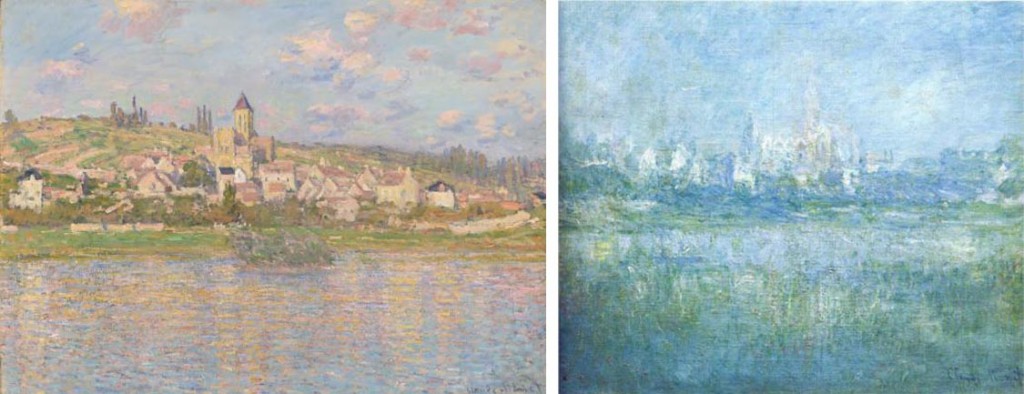
Fig 10 (L) Claude Monet, 'Vetheuil in the Fog', 1879, National Gallery of Victoria, Melbourne Fig 11 (R) Claude Monet, 'Vetheuil in the Fog', 1879, Musée Marmottan Monet, Paris
The Norway pictures did little for me, but two of the London pictures, the Kerry Stokes’ Waterloo Bridge (Fig. 12) and the MMM Houses of Parliament (Fig. 13) have an interesting pastel-like technique. The Houses of Parliament is rather complicated, or perhaps confused, in the way the pastel-like green strokes begin as the tower and end up like rain on the water, creating a spatial discordance reinforced by the intensity of the highlights in the water and the spiky perspective of what must be jetties.
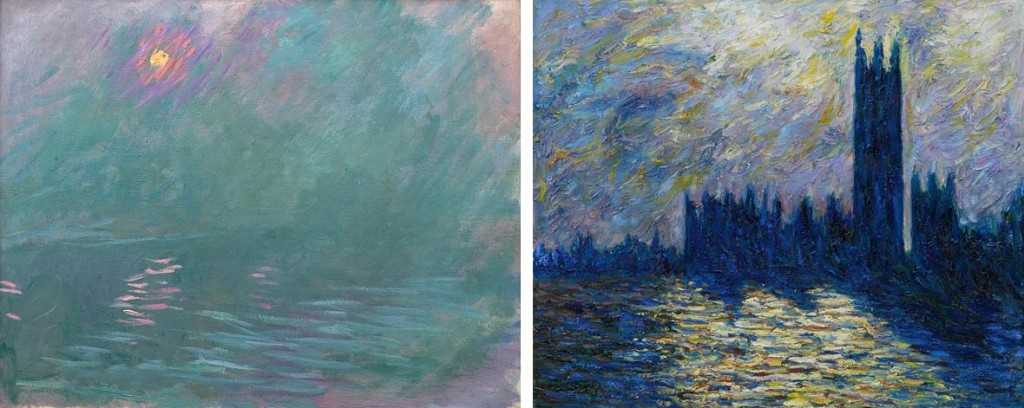
Fig 12 (L) Claude Monet, Waterloo Bridge, 1899-1901, Kerry Stokes Collection, Perth Fig 13 (R) Claude Monet 'Houses of Parliament, reflections on the Thames', 1905, Musée Marmottan Monet, Paris
Moving onto the Waterlilies, there are some fine, classic examples, such as MMM inv. 5163 (1903) (Fig. 14). As I have indicated, these are much more realistic than you might think. Particular interesting is the one from the Houston (1907) (Fig. 15), all greens and greys with touches of carmine in the flowers, which is nicely juxtaposed with the closely related MMM inv. 5168 (Fig. 16), which has fiery red reflections and no flowers. Virginia Spate’s essay (and the label), pursue connections with symbolism, prompted by an extravagant essay by Octave Mirbeau. Spate argues that ‘there was nothing in the Japanese bridge series to explain the reddened water’ which ‘suggests that Monet may have been unconsciously influenced by Mirbeau’s blood-soaked torture garden.’ (The label distills this point into ‘[a] dramatic but disturbingly ambiguous portrayal of a sunset, in which the water seems stained with blood.’) But is this really necessary? Conceivably, if uncharacteristically, Monet may have consciously chosen to ramp up the colouring for Symbolistic effect; but would the conscious Monet have permitted his unconscious self to alter, say, the grey of the Houston picture all the way to red? Might it not be simpler to propose that the red was actually there because it was sunset, and that Monet took it from there?
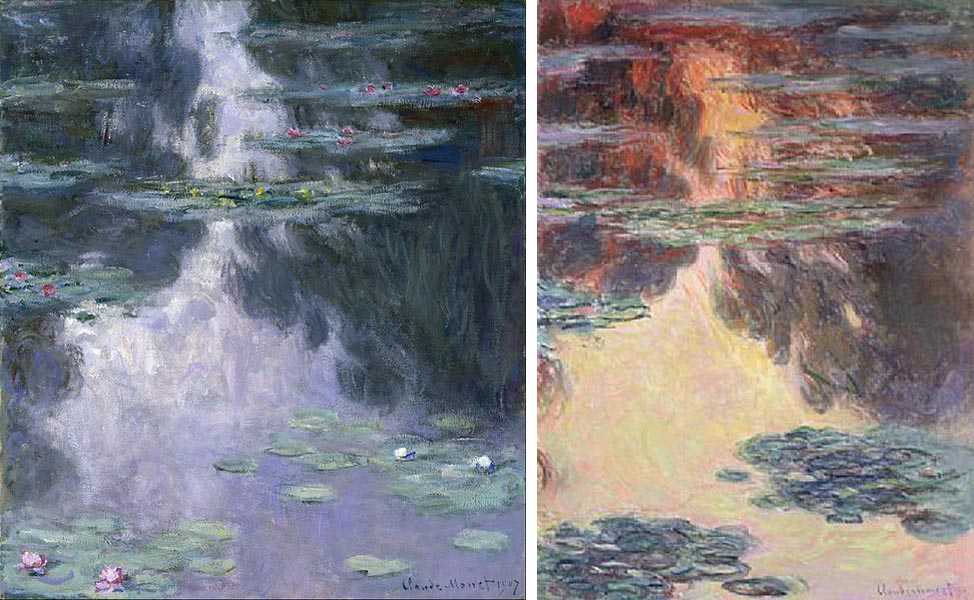
Fig 15 (L) Claude Monet, 'Waterlilies', 1907, Museum of Fine Arts, Houston Fig 16 (R) Claude Monet, 'Waterlilies', 1907, Musée Marmottan Monet, Paris
Still, this prompts us to look more closely at the two works. In the Houston version the top section—a patch of grey-mauve sky reflection—has the effect of somehow flowing downwards, while the reflections of the trees seem to grow upwards out of the lower waterlilies. These consitute a background plane, which the strongly perspectival waterliles float in an oblique plane above it and in opposition to it. In the MMM version the top section is aflame, and acts less as a downward-moving funnel than as a turbulent disturbance that spreads across the top of the painting. The reflections of the trees seem now to be properly upside down, while the water, now tinged with pink and yellow, seems to be like a flame rising, although going from yellow to red rather than the other way about. Even more than the Houston work, the MMM picture depends on the contrast between this surface movement and the oblique overlay of the patches of water lilies, and it is in the play between the two that the primary visual interest resides. Rather than being a proto-Abstract Expressionist work (a trope that the labels, but not Spate, sometimes develop), this work recalls the playing-off of mysterious backgrounds against emphatic perspectival foregrounds that one finds in visual-effect intensive sci-fi movies.
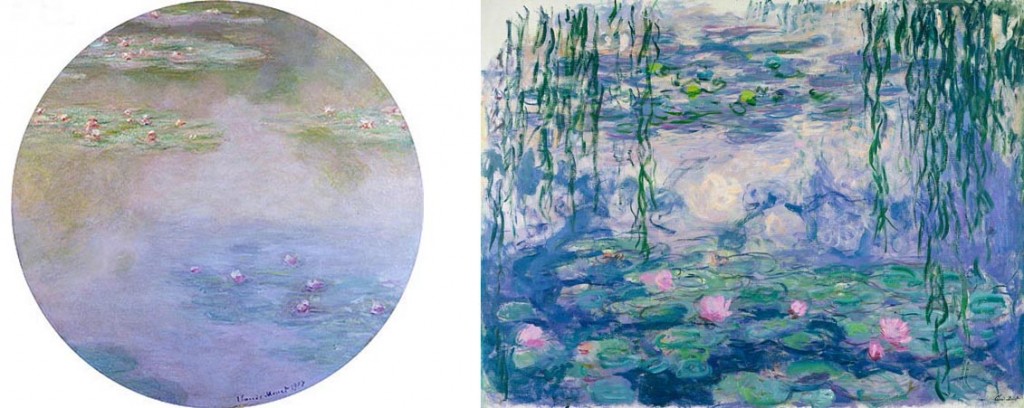
Fig 17 Claude Monet, 'Waterlilies', 1907, Saint-Etienne Metropole, Musee(s) Art Moderne Fig 18 (R) Claude Monet, 'Waterlilies', 1916-9, Musée Marmottan Monet, Paris
These works, to my eyes, are much more interesting than the circular canvas (from Musée(s) Art Moderne, Saint-étienne) (Fig. 17), which is almost, but not quite, spatially inert, and has the soft quasi-Rococo colouring, relatively high key and slight sickliness that tends to prompt a perjorative categorisation as ‘like a chocolate box’. Some works in this room verge on the heavy-handed while others, like MMM 5174 (Fig. 18), have an art nouveau decorativeness that is saved from flatness by the play of perspective (the water lilies) against surface pattern (the wisteria fronds). Further on, in the section on the ‘Japanese’ Bridge, the establishing work—the one we expect to find—is from the Art Institute of Chicago (1900) (Fig. 19), but perhaps the most engaging is MMM 5077 (Fig. 20). The label’s ‘in the paintings of this scale the act of painting becomes an expression of the body itself’ is code for saying it is a proto-Jackson Pollock, but of course what gives these works their interest is that they are not abstract, nor derived from broad gestures even if such gestures were needed to execute them, are wholly optical. If you could not read this as a representation of bridge, water lilies and hanging wisteria it would be a dull piece, however nice the interweaving of ribbons of pigment.
Fig 19 (L) Claude Monet, 'The bridge over the waterlily pond', 1900 Art Institute of Chicago, Illinois Fig 20 (R) Claude Monet, 'The Japanese Bridge', 1918, Musée Marmottan Monet, Paris
Finally, on the far wall of the last room is a strange group of works, painted when Monet was having problems with cataracts. The two on the left (MMM 5086 and 5087) (Fig. 21) read from across the room as having real gold backgrounds, a deception that only fades on closer insection, when the effect proves to be done with yellows and red pigments. These are, as their titles (but no visual material in the exhibition), confirm, representations of Monet’s house seen from the Rose Garden. They seem to be almost expressionist, and, like the weeping willow paintings (MMM 5125 and 5081), painted at the end of WW1, and which, it is plausibly argued, are deliberate images of mourning, recall the late Constable’s anguished late works. But Monet was no expressionist, and although one may begin by reading these explosions of gold and red as images of torment, within moments they resolve themselves into representations of places that are not, in fact, at all frightening. In the end they are, more they are anything else, beautiful.
© David R. Marshall 2013

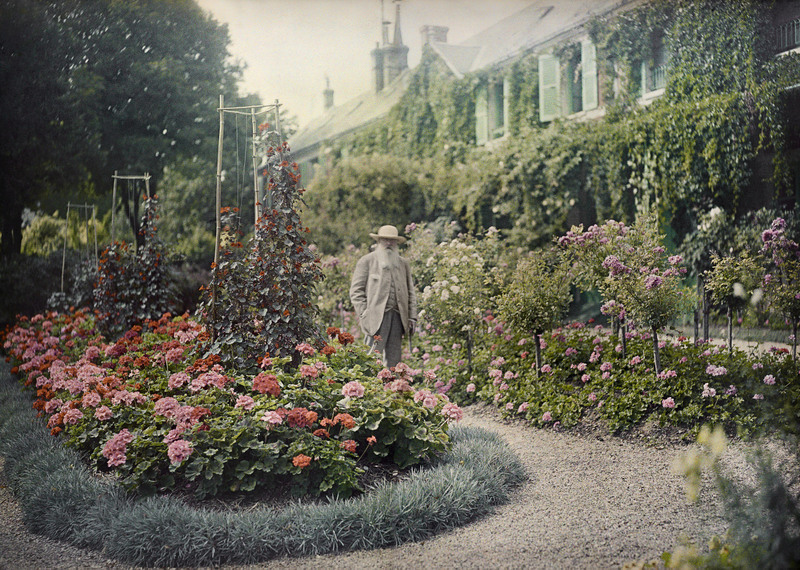


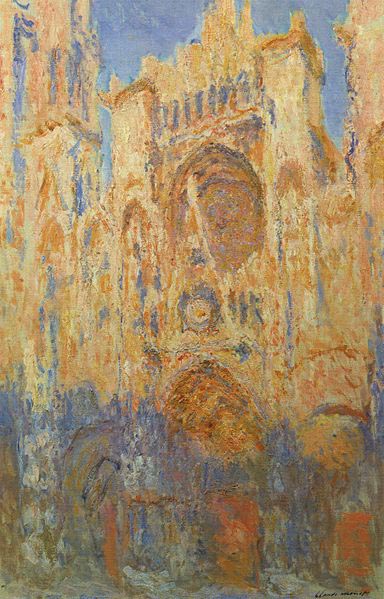

I wonder David if you have any thoughts on the additional display, such as the faux stone wall paper and the provincial makeover of the cafe? Care to share your thoughts?
Great review by the way.
Thanks David – so comprehensive with lots to think about(as usual). Giverny is certainly a fine example of “the symbiosis between place-making and art”.
David, you are absolutely spot on! Just came from the exhibition, we were so looking forward to it… and very quickly so disappointed. So disappointed!
Thankyou for a wonderful and thought provoking review David.
As both a gardener and an art lover I may disagree with your thoughts on the significance and the importance of the garden at GIverny. The garden redesign at the time was an creative statement in itself and the symbiosis with Monets imagery and his psyche gave it no less importance
Great review. Was just on the NGV’s website and you can actually download the labels.
http://www.ngv.vic.gov.au/__data/assets/pdf_file/0011/595793/NGVIMonetsGarden_ArtworkLabels.pdf